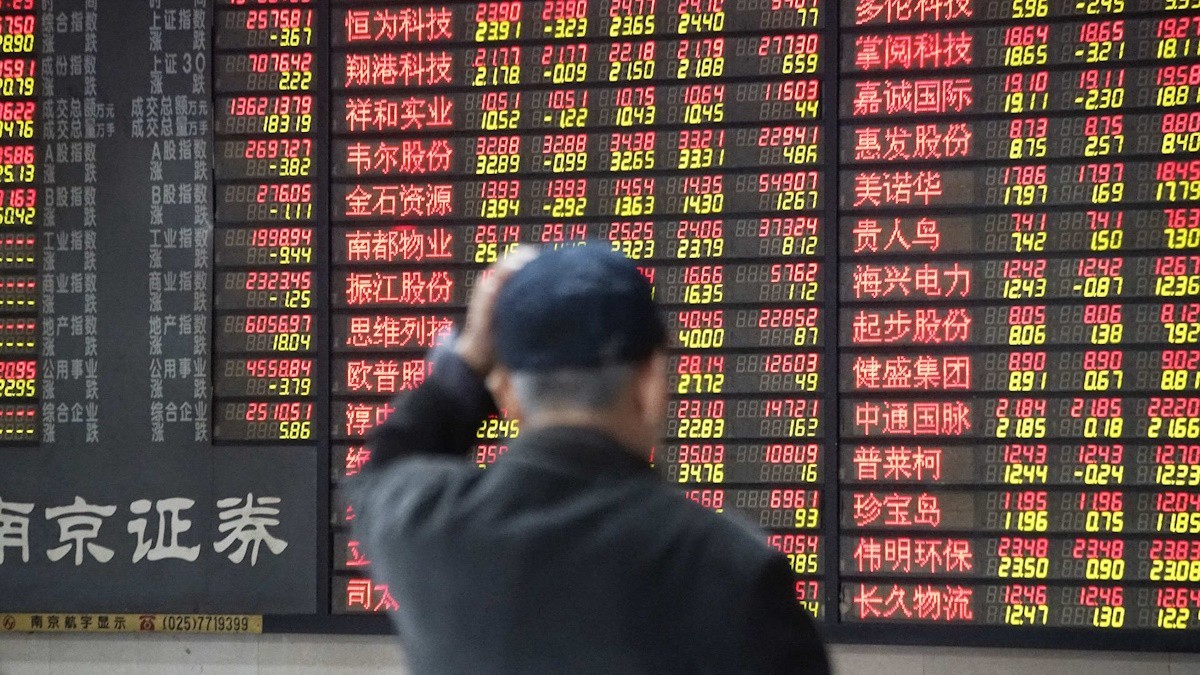A Stock Bailout Won’t Solve China’s Troubles

Beijing’s largess might help put a floor beneath China’s ailing stock market. A better foundation for a rally—and China’s future—would be rebuilding the nation’s crumbling housing market.
Chinese stocks had their best day in years on Tuesday, after Beijing hinted that it will step up efforts to prop up the market. China’s CSI 300 index, which tracks the biggest stocks in Shanghai and Shenzhen, has gained 4.5% in the past two trading days. The CSI 1000 index, which tracks smaller stocks, has surged 12%.
Central Huijin, part of China’s sovereign-wealth fund, said Tuesday that it will expand the scale of its exchange-traded fund holdings—lighting the fire under small-cap stocks, which had been plummeting. Adding to the fervor, an unconfirmed report from Bloomberg claimed that China’s leader Xi Jinping met with market regulators on Tuesday too. On Wednesday, state media reported that the head of China’s securities regulator was stepping down.
In a Monday report, Goldman Sachs estimated that state-backed funds have bought around 70 billion yuan, the equivalent of roughly $10 billion, of Chinese stocks in the past month. At least 200 billion yuan is needed to stabilize the market, according to the bank.
Given the large state presence in the market, a relatively small public float and already cheap valuations, it’s possible Beijing could steady the ship—at least for a while. The government also has plenty of other tools at its disposal, like banning major shareholders from selling.
But if Beijing is really planning to deploy hundreds of billions of yuan—still an uncertain prospect—is the stock market the best place for them? The answer is almost certainly no.
The last time Beijing pulled out all the stops to stem a market decline in 2015, China was also facing an ugly housing downturn. But there are crucial differences.
Back then, the stock market itself was a big source of instability: Leveraged bets on stocks had skyrocketed in early 2015 as individual investors, and even listed companies themselves, rushed into the market, cheered along by state media. The CSI 300 more than doubled in less than a year before peaking in June 2015. Outstanding margin loans more than quintupled to 2.3 trillion yuan. When the bubble deflated, that risked creating a vicious cycle as investors sold stocks—or other assets—to repay debts.
These days, outstanding margin loans are nearly 40% below their previous peak and have been drifting lower. Rather than a deflating margin bubble threatening financial stability, the market collapse this time is firmly anchored in reality. It reflects worries about a structural growth slowdown, the slow-motion implosion of the real-estate market and policy uncertainty.
The gigantic sums of money that would be needed to shock the market back to life would be better put to work in the real-estate sector. Property investment dropped nearly 10% year on year in 2023 while home sales by value fell 6%. Sales from the country’s top 100 largest developers fell 34% in January from a year earlier, making it the worst month since at least July 2020, according to China Real Estate Information.
Ensuring the timely delivery of unbuilt apartments that households have already bought is the key to reviving consumer confidence. That would probably mean directly recapitalizing some larger, healthier property developers—giving them the wherewithal to complete the languishing projects of their peers, and giving banks and households the confidence to trust them with their cash.
The sums involved would be large: A November note from research firm Gavekal Dragonomics estimated that even in 2022, delivering all those apartments would have required a backstop of around one trillion yuan. But the idea that households will have the confidence to spend and invest while the value and safety of their main asset remains so murky is questionable at best: The stock market and floor-space sales have moved down more or less in tandem since mid-2021.
Throwing billions into the stock market may arrest its decline, at least for a while. But that would be treating the symptoms, not the disease.
